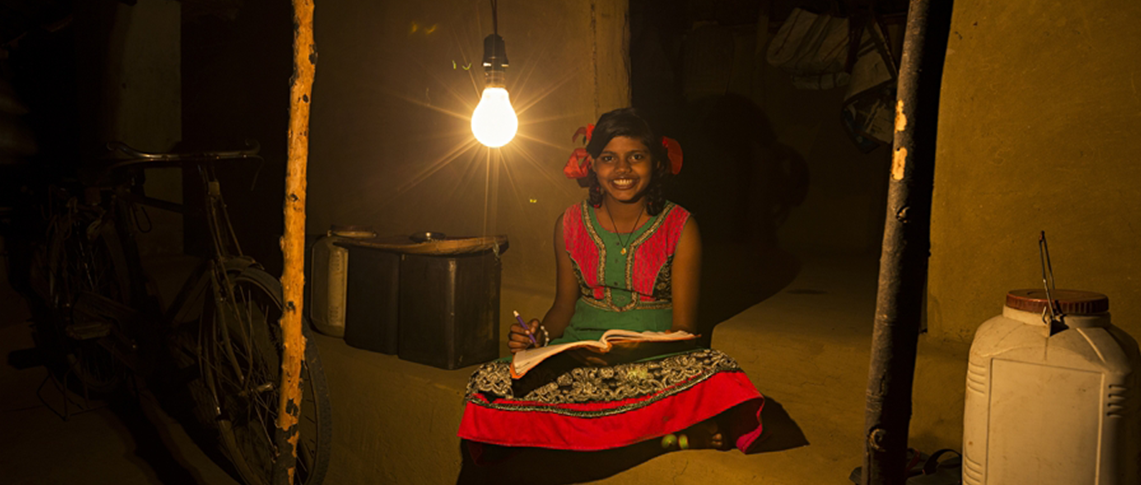Lack of reliable electricity supply is one of the biggest hurdles for socio-economic development of the nation
Imagine a life without electricity. The world comes to a standstill as the sun goes down. No engine to fire transportation. No television. No internet. No mobile phone. Health services are affected. And then there is our primal fear of darkness.
That is the reality that more than a quarter of India’s population has long lived with. But light may gradually be entering their dark, dismal existence.
On April 28, Prime Minister Narendra Modi announced that every single village in India is now electrified and called it a historic day in India’s development journey. Going beyond the politics of electrification, let’s first acknowledge that this is a huge accomplishment. The World Bank in its latest ‘Energy Progress report’ says India is doing more than any other country in providing electricity to people. Between 2010 and 2016, the report says, India provided power to 30 million people each year.
At the same time, the celebratory mood is tempered by some hard truths:
• The electrification benchmark of 10 per cent leaves the remaining 90 per cent of the village unelectrified;
• The government’s own data reveal that 31 million households are still in the dark;
• And of India’s 18,452 villages, a mere 7.3 per cent (or 1,417 villages) have 100 per cent household connectivity.
Saubhagya scheme
Hence, true redemption for the world’s largest unelectrified population lies in the $2.5-billion Saubhagya programme, which envisages providing electricity connections to all households by the end of this calendar year. Unlike earlier schemes, the Prime Minister’s Saubhagya scheme changes the metric from village electrification to household electrification.
However, the time has come for all Indian citizens to consider Right to Electricity as a fundamental right. The link between poverty and lack of access to electricity is finally being seen as unexceptionable. And it hasn’t come a day too soon. Many economists have long argued that without access to power people are doomed to a life in poverty. Lack of access to power contributes to poverty and to economic deprivation. From literacy to healthcare, lack of electricity hampers all aspects of human development.
In 2013, Justice S Manikumar in an erudite judgment ruled that lack of electricity affects education and health and is a cause of economic disparity, and consequently, inequality in society leading to poverty. In directing the Tamil Nadu Electricity Board to provide power to 180 families of launderers, the court held that access to electricity should be construed as a human right. “Denial of it,” said Justice Manikumar, “would amount to violation of human rights.”
Coverage of all households may well be a possibility but when it comes to talking about power as a fundamental right for all citizens, it is as much about electrification as about the quality of power, affordability and reliability. Access to unreliable power is hugely “expensive” to the poor households. It results in expensive capital equipment such as a fan being used only for a fraction of the time its needed. Multiply this with everything else a newly electrified home may be induced to purchase (often an expensive credit) and you know the cost to the household.
Focus on reliability
Worse still is the damage to capital stock from erratic electric supply. Expensive stabilisers and inverters are an added “insurance” burden when power supply is known to be erratic. Access to electricity becomes equitable only when the reliability of power supply is ensured. A mere extension of a wire is not the fundamental right that is being discussed here; that wire should carry reliable, affordable power to all households. That power is pivotal to the realisation of socio-economic goals — of individuals and the nation’s.
So, from access to electricity as a fundamental right, access to reliable power should be a fundamental right. Apart from those who have no access to power, there are many millions who get power only sporadically. If energy is the lifeline of human productivity and ingenuity — and we know that it is — sporadic and uneven power supply curtails, even injures, that ingenuity. Closely tied to the idea of reliable power as a fundamental right is the idea of the power being affordable. With large capacities being added through all forms of generation, especially renewables, its affordability could possibly be guaranteed for the long term.
Universal electrification, and the realisation of the dream of reliable power as a fundamental right, will ensure that villages never have to live under the veil of darkness again.
– Pratik Agarwal
Group Chief Executive Officer
https://www.thehindubusinessline.com/opinion/make-power-supply-a-fundame…

 Please wait...
Please wait...